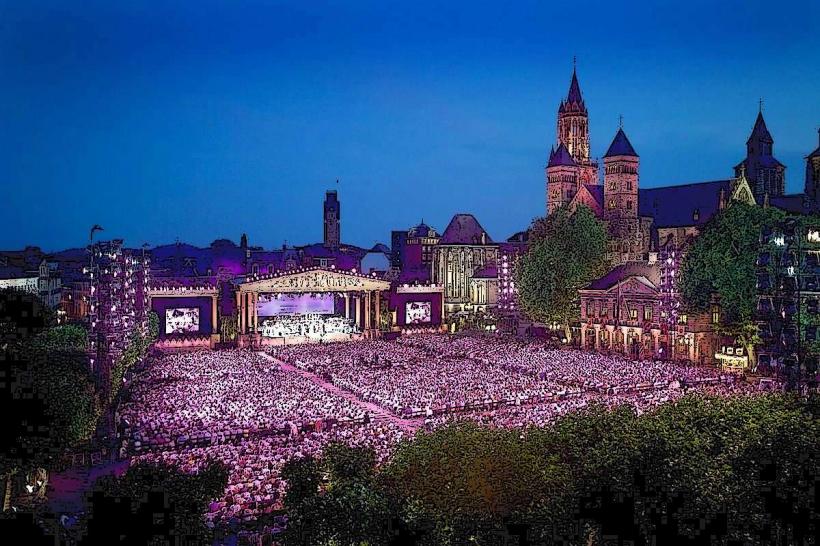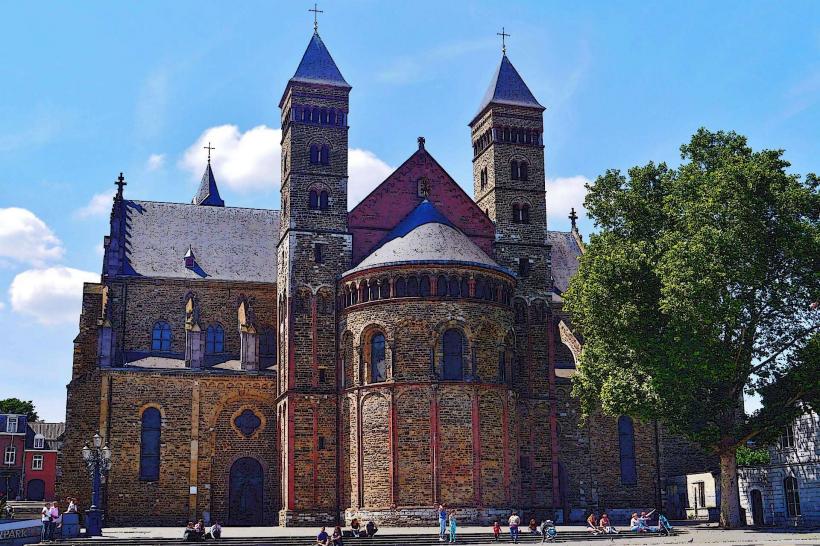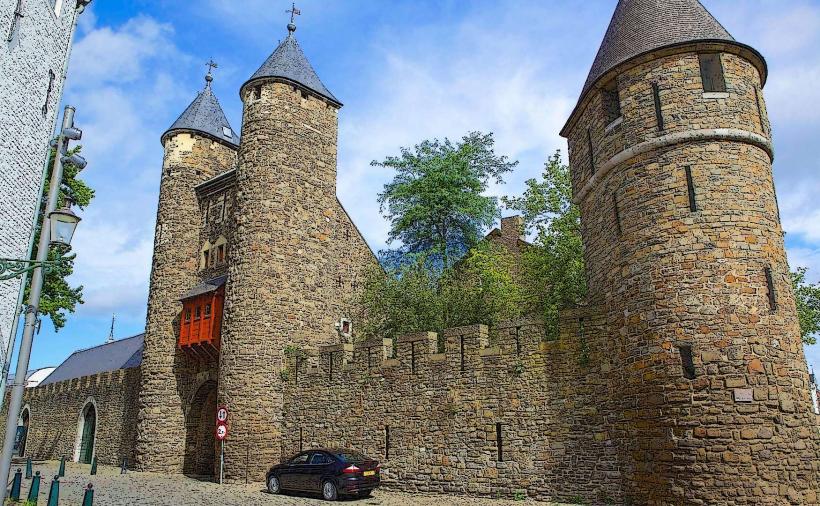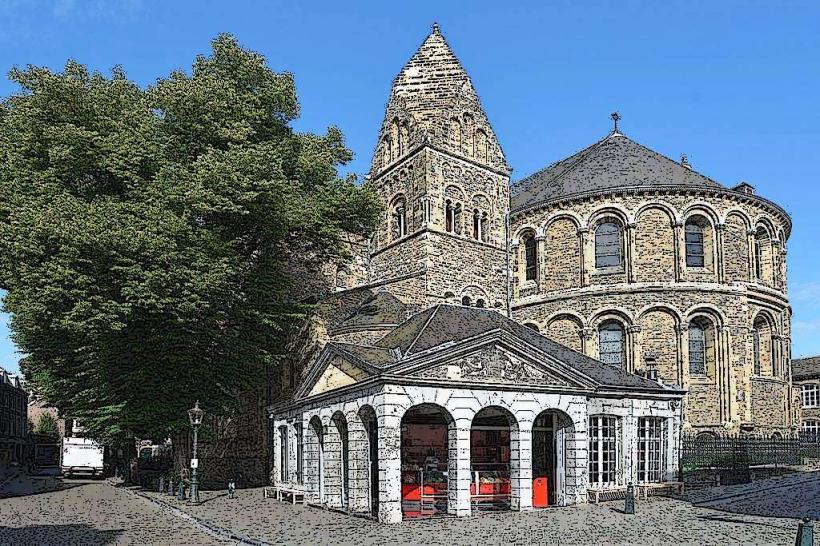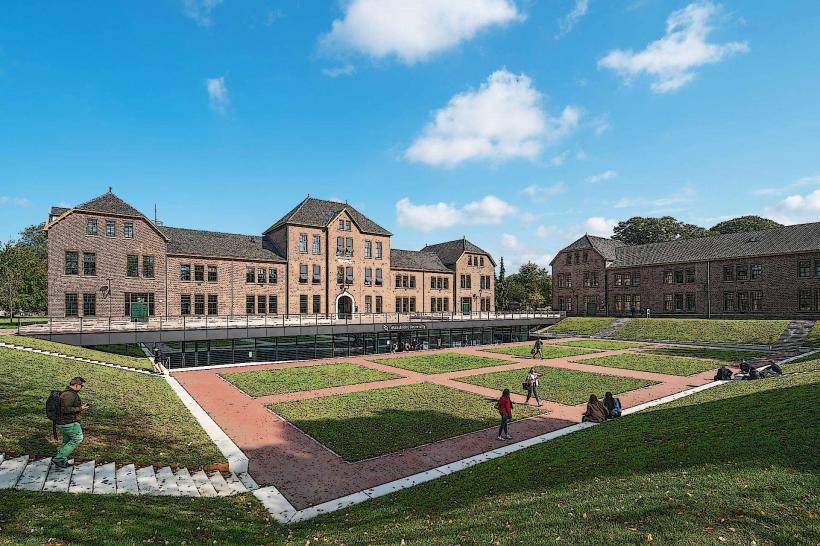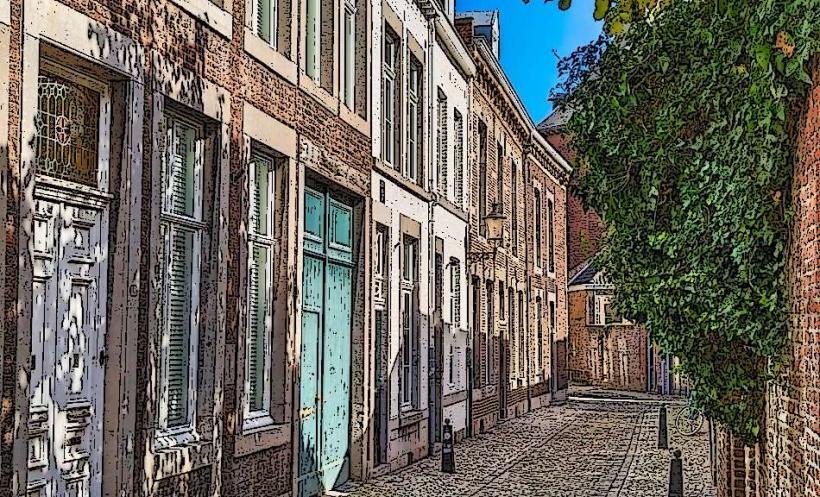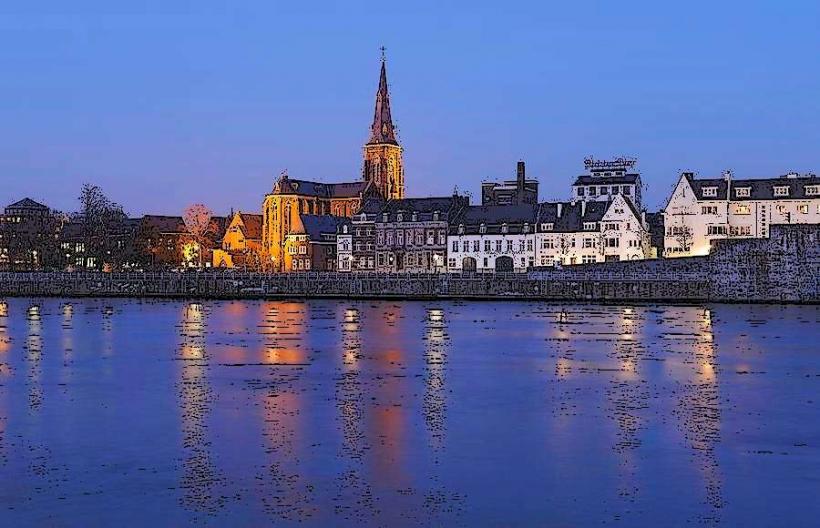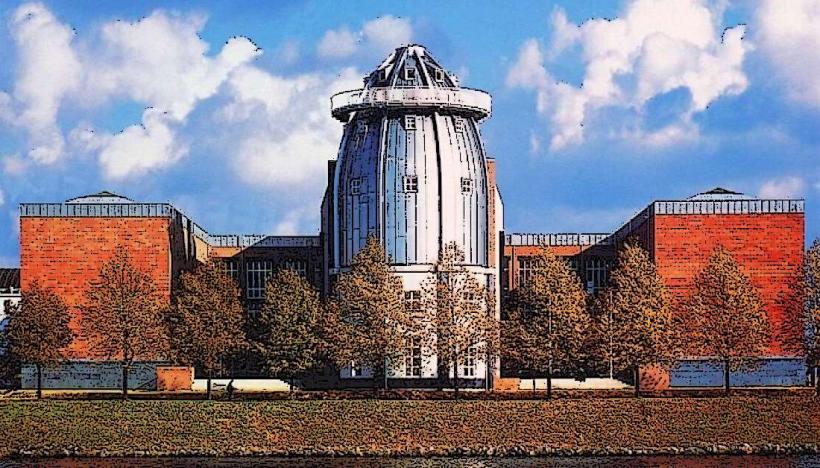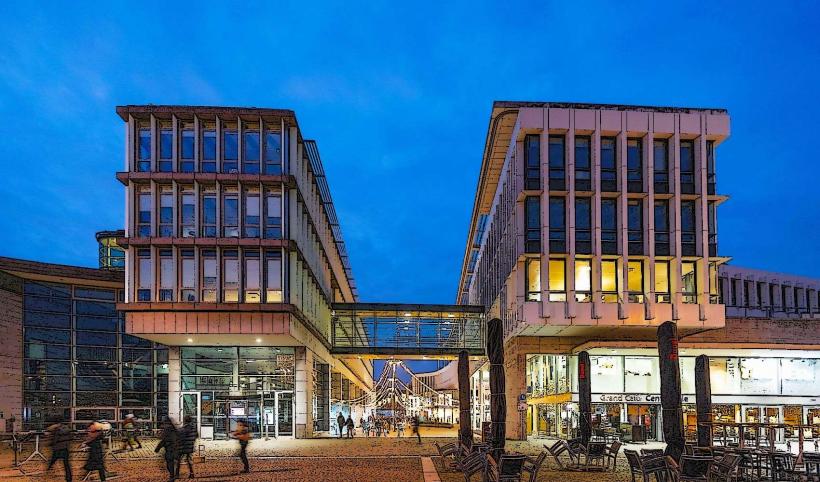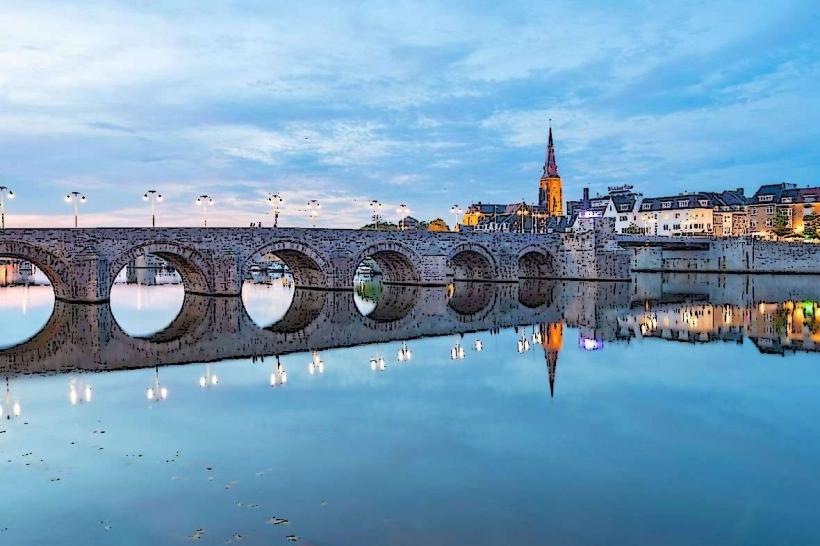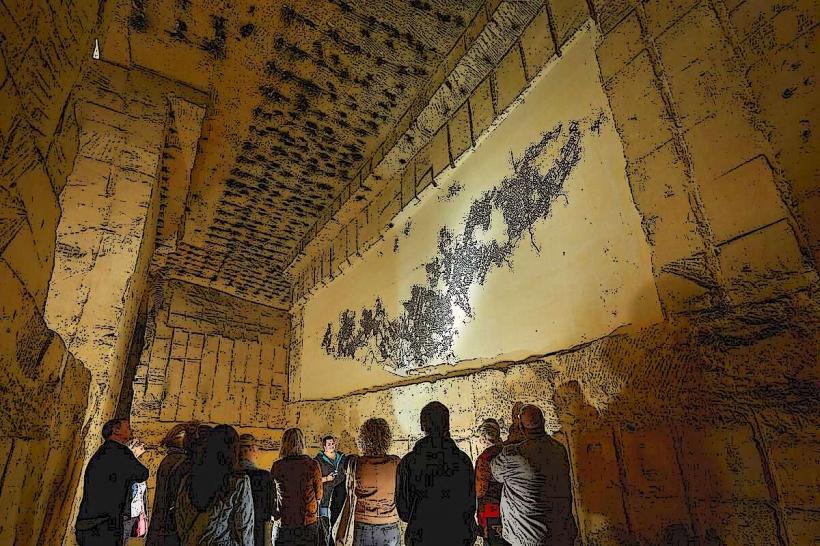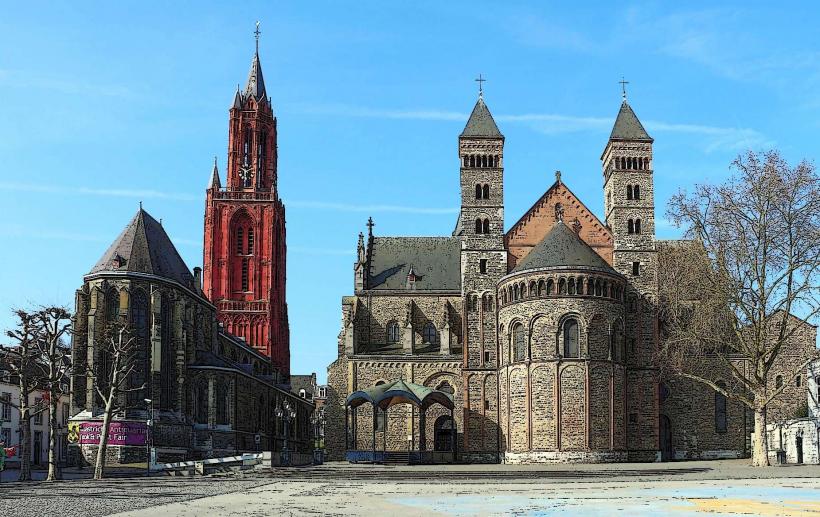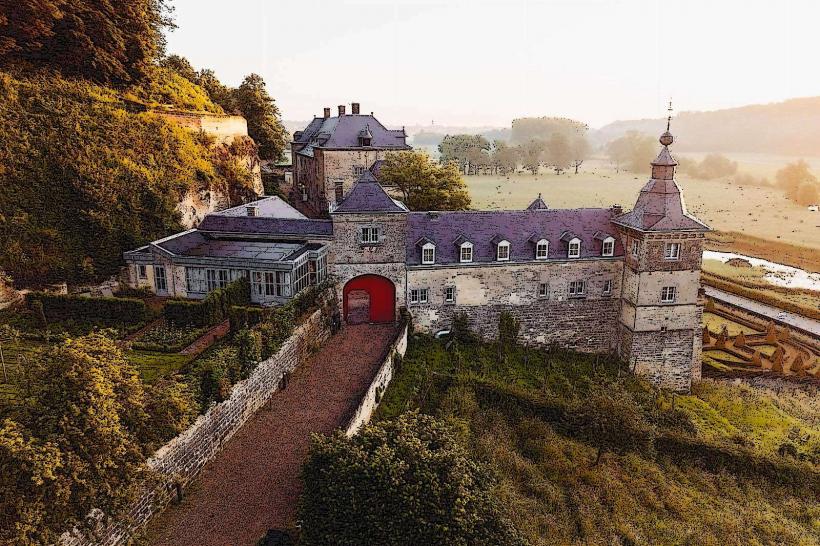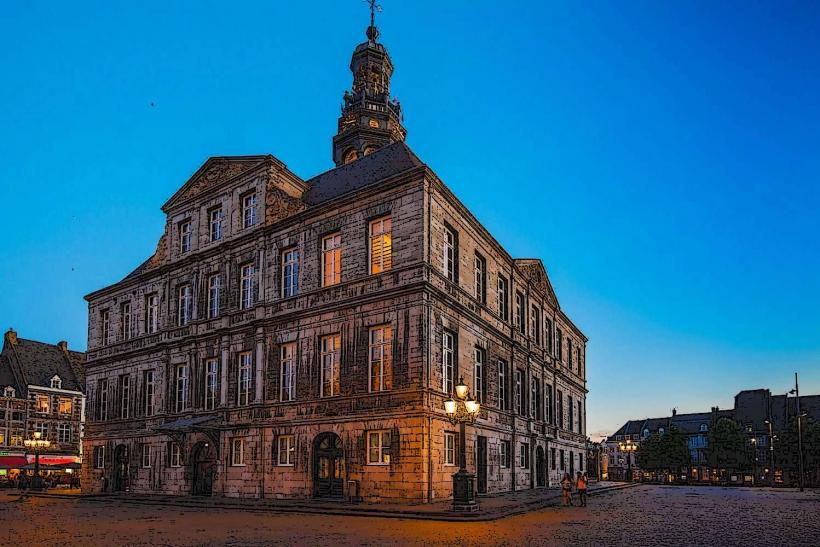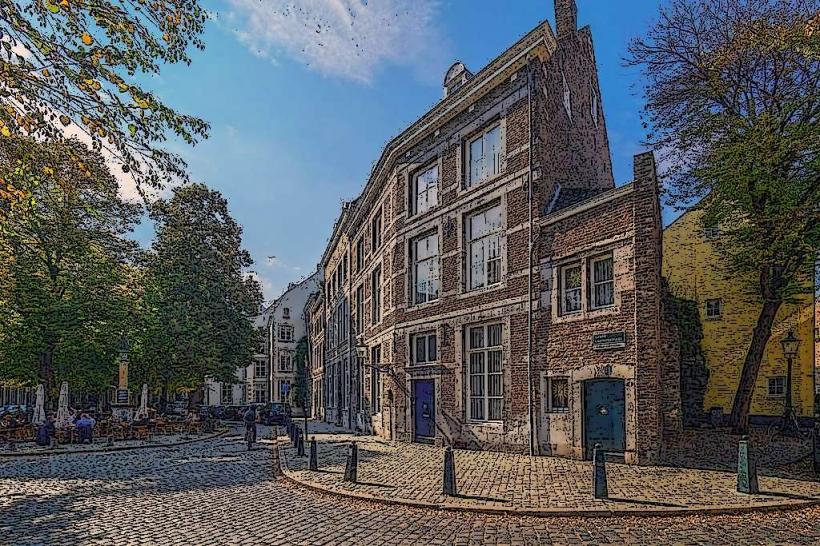Information
Landmark: Caves of St. PietersbergCity: Maastricht
Country: Netherlands
Continent: Europe
The Caves of St. Pietersberg (known in Dutch as Caves of Sint-Pietersberg) are an extensive system of underground tunnels and quarries located near the Sint-Pietersberg hill just south of the city of Maastricht in the Netherlands. These caves are both a natural and historical landmark, offering visitors a glimpse into the region's unique geology, history, and cultural heritage.
1. Location and Overview
- Address: The caves are located on the southern outskirts of Maastricht, near the Sint-Pietersberg hill and the Meuse River. The area is easily accessible from the city center, making it a popular destination for tourists and locals alike.
- Geological Background: The caves are part of a larger network of limestone quarries that have been carved out of the Sint-Pietersberg hill over centuries. The hill itself is made of limestone, a sedimentary rock that was deposited during the Cretaceous period around 70 million years ago. Over time, the limestone has eroded and been excavated, resulting in a vast network of tunnels and chambers.
2. Historical Significance
- Roman and Medieval Use: The caves were originally created as quarries in ancient times, with the limestone being extracted and used for construction. During the Roman era, the stone from the caves was used to build fortifications, public buildings, and other structures. In the Middle Ages, the caves were also used as storage spaces, shelters, and even chapels.
- Underground Fortifications: During the Second World War, the caves gained strategic importance. The network of tunnels and chambers was used by both the German and Allied forces for military purposes, including hiding ammunition and other supplies. Some sections of the caves were also used to shelter civilians during air raids.
- Post-War Period: After the war, the caves were abandoned as military structures, and today they are primarily a tourist attraction, offering an educational experience about the region’s history, geology, and wartime significance.
3. Cave System and Features
- The caves of Sint-Pietersberg are part of a vast subterranean network of tunnels and chambers that stretch for several kilometers beneath the hill. They are not natural caves in the traditional sense but are rather man-made limestone quarries that have been hollowed out over time.
- Tunnels and Chambers: The network includes numerous narrow tunnels, large open chambers, and connecting passageways. Some of the tunnels are narrow and winding, while others open up into larger halls. The caves vary in height, with some sections of the tunnels requiring a crouched walk, while others offer taller spaces.
- Ceiling Drawings and Inscriptions: Visitors can view remnants of drawings, inscriptions, and even religious symbols left behind by people who lived and worked in the caves centuries ago. Some of the walls also feature carvings made by quarry workers, offering a fascinating glimpse into the lives of those who spent time in the caves.
4. Tourism and Visiting the Caves
- Guided Tours: The best way to explore the Caves of St. Pietersberg is by taking a guided tour, which provides insight into the history, geology, and use of the caves over the centuries. Knowledgeable guides explain the significance of the caves and point out key features such as the drawings, carvings, and historical landmarks.
- Tours for All Ages: The caves are family-friendly, and the tours are designed to be accessible for people of all ages. The tours are typically conducted in multiple languages, including Dutch and English, ensuring a broad range of visitors can enjoy the experience.
- Tour Highlights: Some of the highlights of the tours include exploring sections of the caves that were once used as wartime shelters, viewing the medieval chapel inside the cave, and learning about the quarrying process that shaped the landscape of the area.
5. Visitor Experience
- Educational Value: Visitors can learn about the history of the caves, the geology of the region, and how the caves have been used for thousands of years. Information about the Roman, Medieval, and World War II periods is often included in the tours, making it an informative experience for history enthusiasts.
- Cool Climate: The caves maintain a cool and stable temperature year-round, offering a refreshing break from the heat of the summer months. However, the tunnels can be damp and occasionally muddy, so visitors are advised to wear appropriate footwear.
- Surrounding Area: The area surrounding the caves is also worth exploring. Visitors can take a walk up the Sint-Pietersberg hill, which offers panoramic views of the Meuse River and the city of Maastricht. The hill is part of a larger natural reserve and offers opportunities for hiking and birdwatching.
6. Conservation and Protection
- The caves are carefully preserved and protected to maintain their historical and geological value. Efforts are made to prevent damage to the tunnels and chambers, and visitors are encouraged to follow rules and guidelines to ensure the protection of the site.
- Wildlife and Flora: The caves also serve as habitats for various species of bats and other wildlife, adding to their ecological importance. The surrounding area is a protected natural reserve, and visitors are urged to respect the local environment.
7. Conclusion
The Caves of St. Pietersberg are a fascinating and historically rich destination near Maastricht. Offering a unique opportunity to explore a vast underground network of tunnels and chambers, the caves provide insight into the region's geological history, military past, and cultural heritage. Whether you're interested in history, nature, or simply seeking an adventure underground, the Caves of St. Pietersberg are an unmissable part of any visit to Maastricht.

